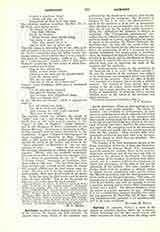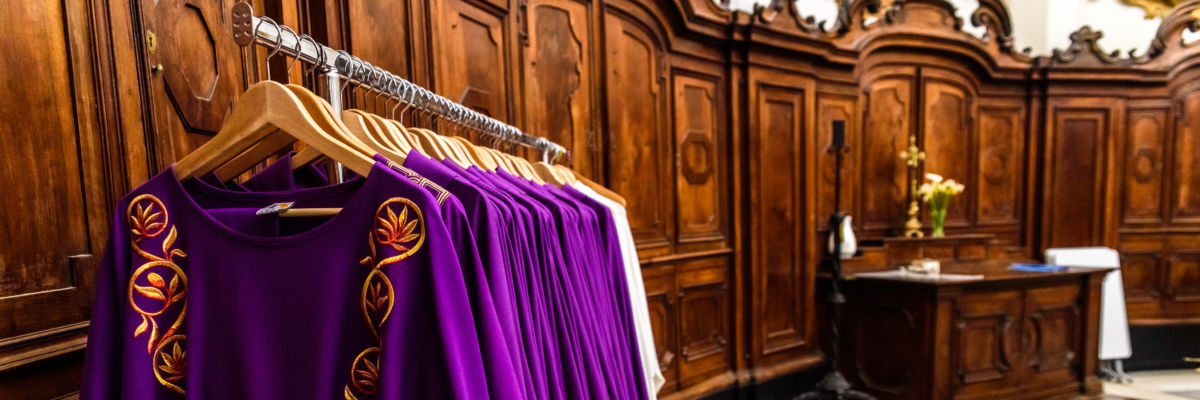

Sacristy (L. sacrastia, vestry), a room in the church or attached thereto, where the vestments, church furnishings and the like, sacred vessels, and other treasures are kept, and where the clergy meet and vest for the various ecclesiastical functions. It corresponds to the secretarium or diaconicum of old. At present the almost universal practice is to have the sacristy directly behind the main altar or at either side. The sacristy should contain cases, properly labelled, for the various vestments in all the liturgical colors; a crucifix or other suitable image in a prominent position to which the clergy bow before going to the sanctuary and on returning (Ritus celebrandi missam, II, i); a lavatory, where the officiating clergy may wash their hands (op. cit. I, i); a copy of the Decree of Urban VIII prohibiting certain offices and masses (S. R. C., 460 ad 6; 555 § Et ne); a book containing the obligations of the Church regarding foundations and their fulfillment (Innocent XII, Nuper, § 26, December 21, 1699). It is customary to have a holy water font, and a bell to admonish the congregation of the advent of the clergy, at the door leading to the sanctuary. The sacristy is not blessed or consecrated together with the church, and consequently is not a sacred place in the canonical sense. However, except where penalties are concerned, it enjoys on the whole the same prerogatives as the church. When a sacristy directly behind the sanctuary has two entrances, the clergy enter the sanctuary at the gospel side, and leave by the epistle side (S. R. C., 3029 ad 12). A double sacristy is sometimes provided, one for the clergy, one for the altar boys. Canons too usually have their own sacristy. In cathedrals, where there is no special chapel for this purpose, there should be a separate sacristy (secretarium) with an altar, where the bishop may assist at Terce and prepare for pontifical Mass (Caerem. Episcoporum, I, 137; II, 74; see Sacristan).
ANDREW B. MEEHAN


